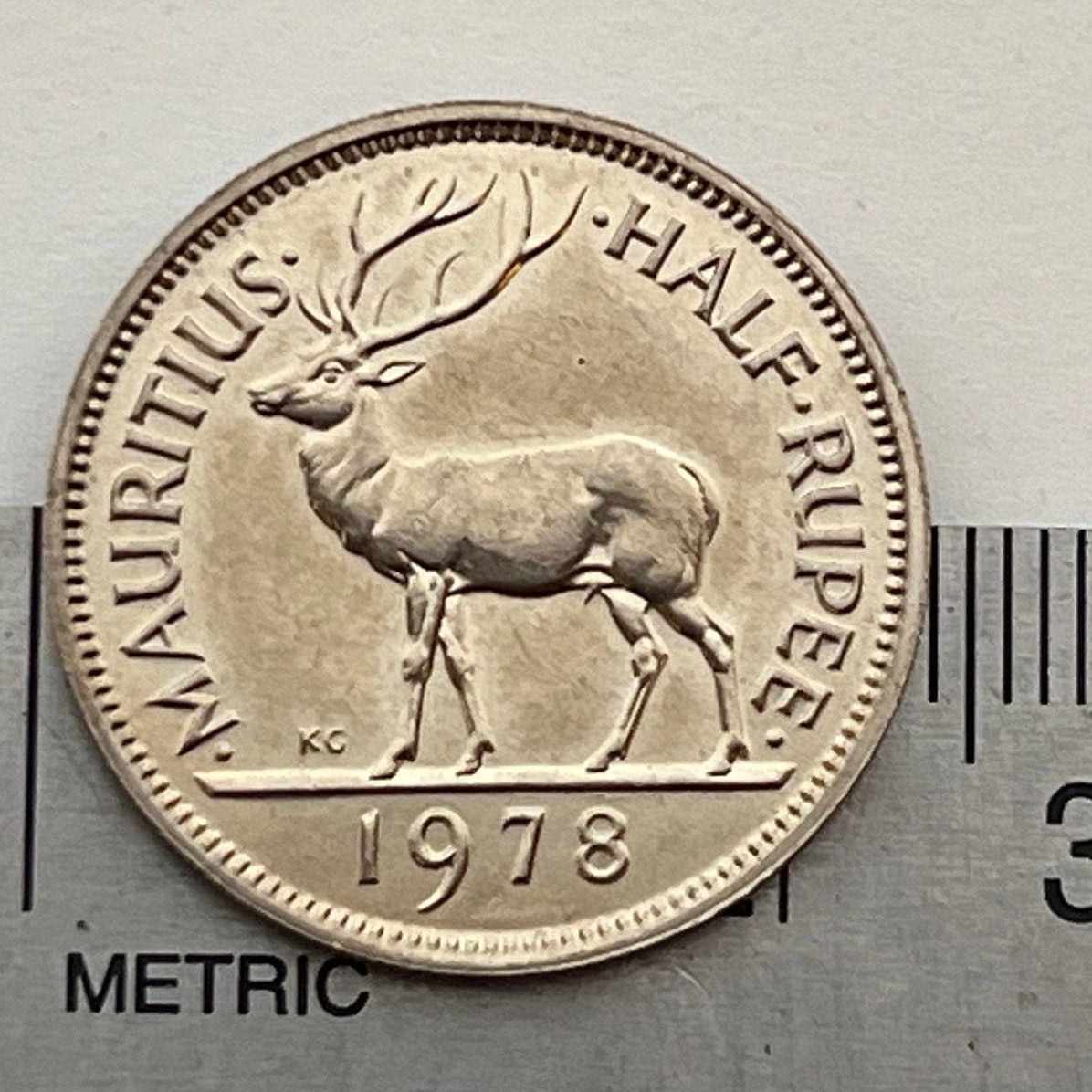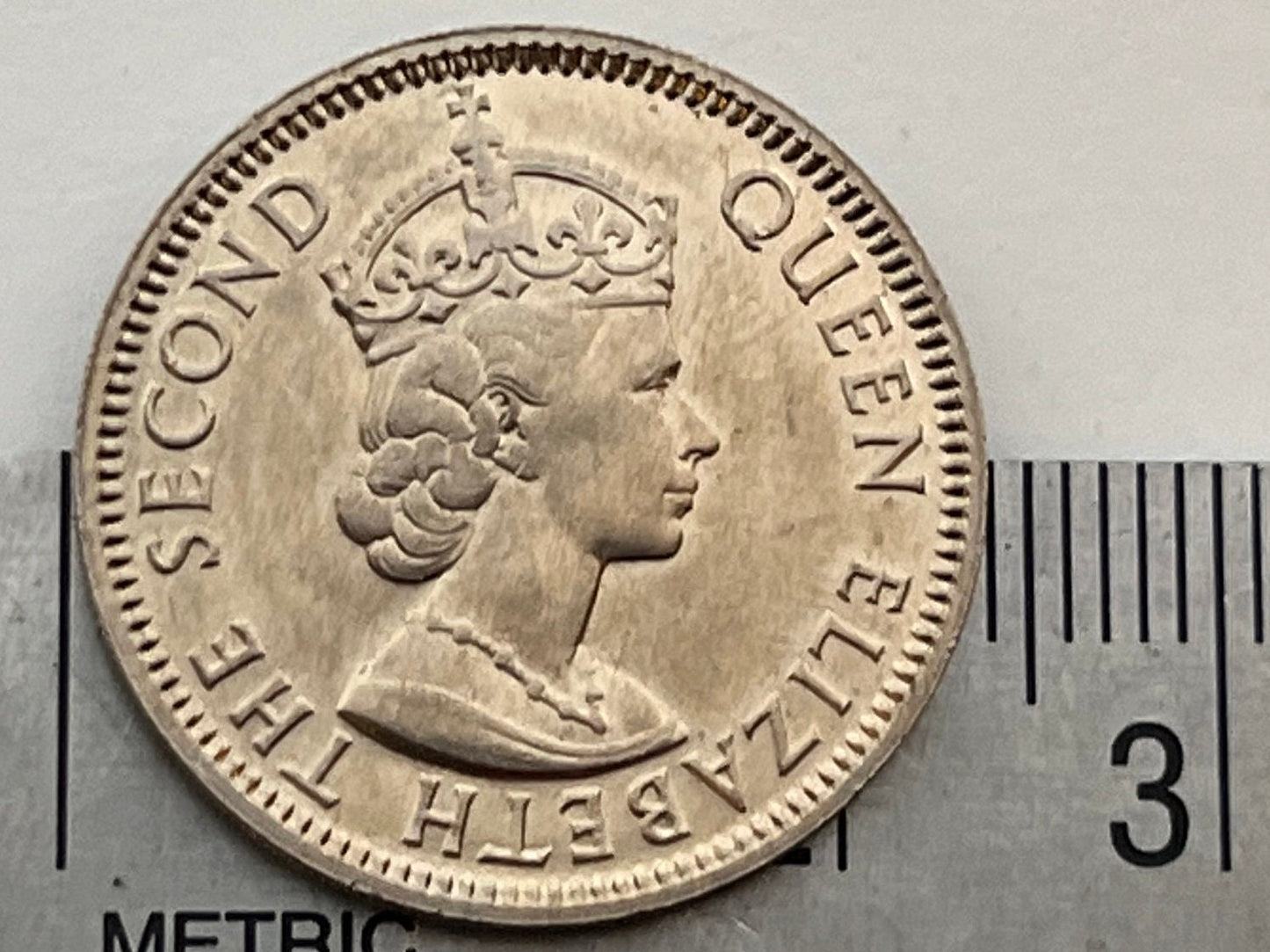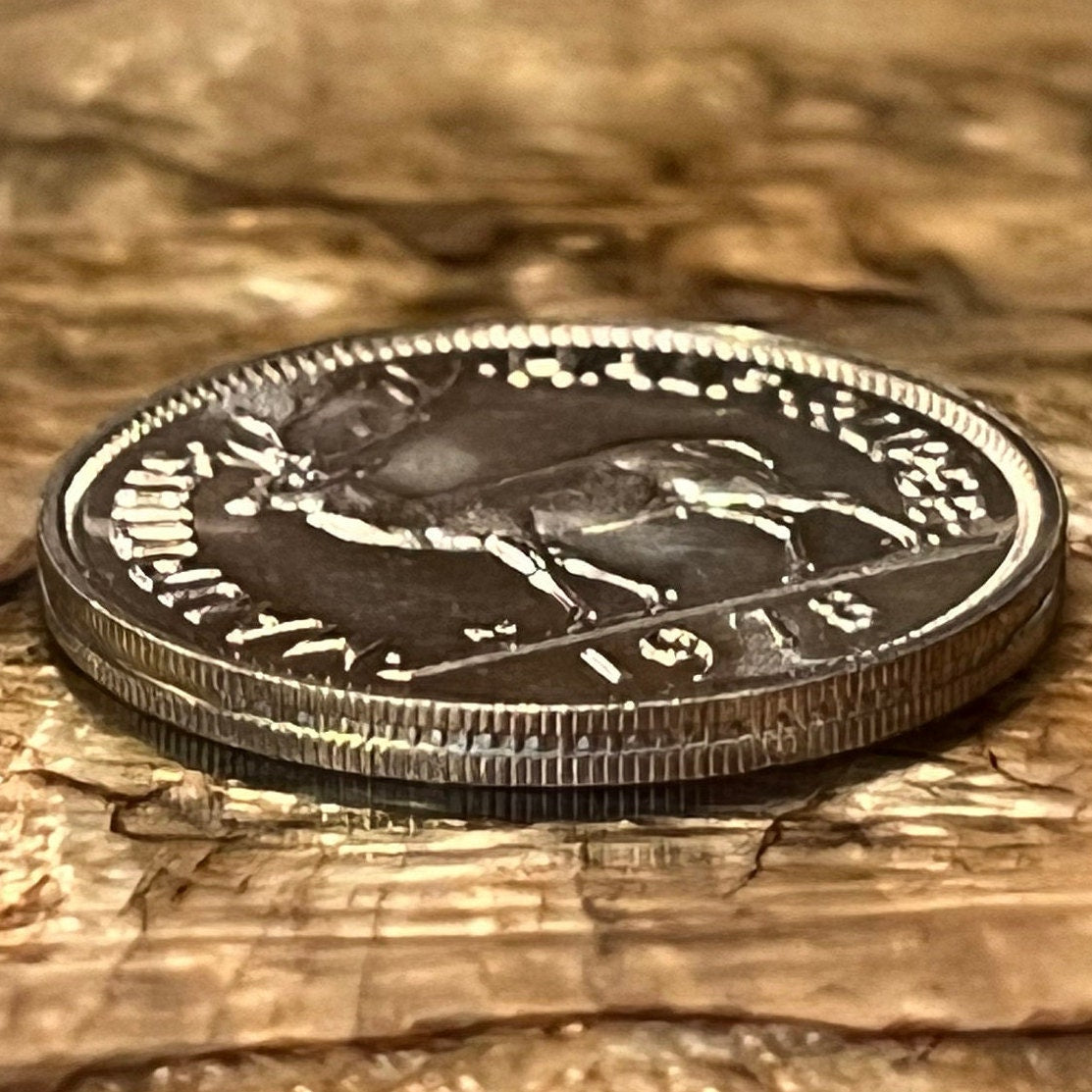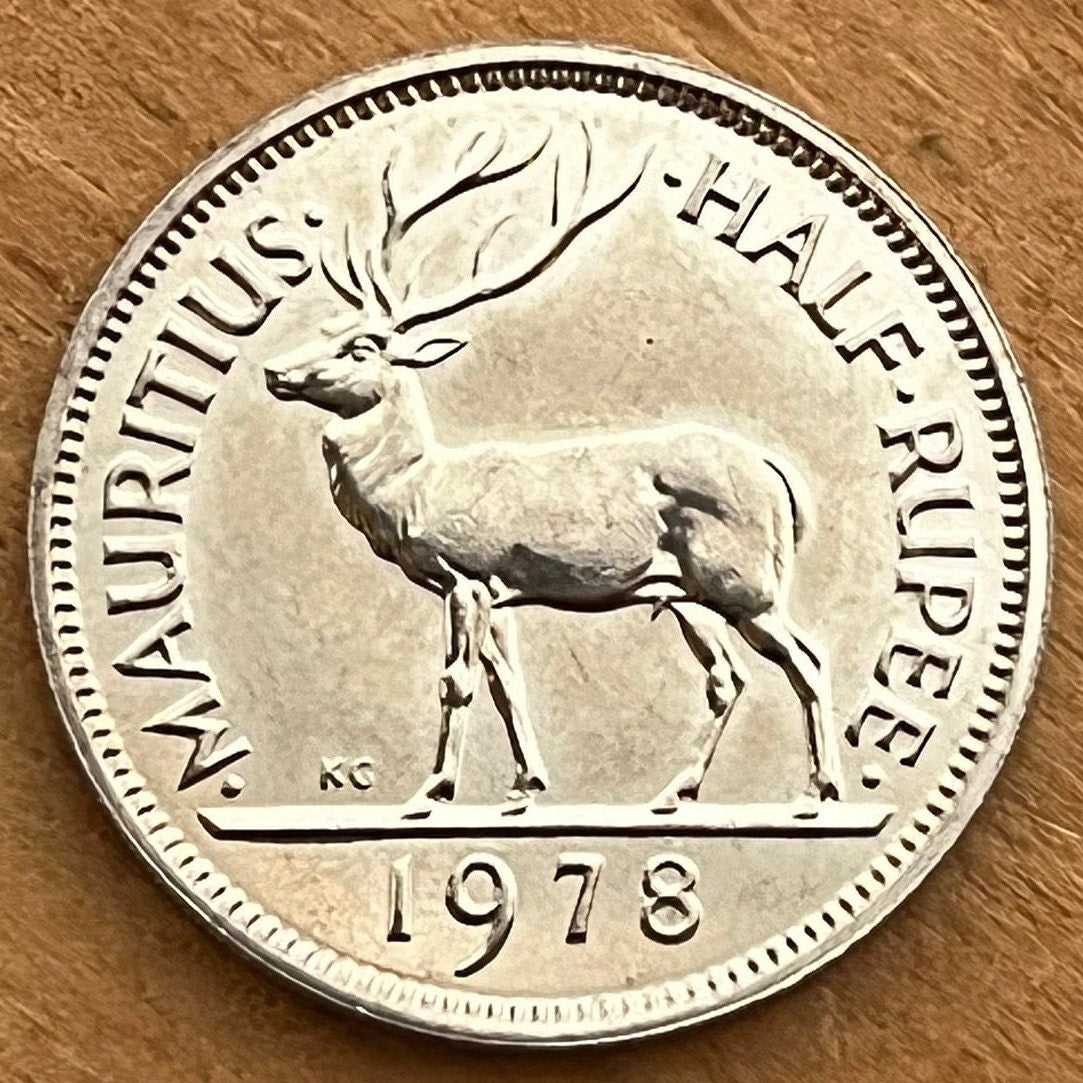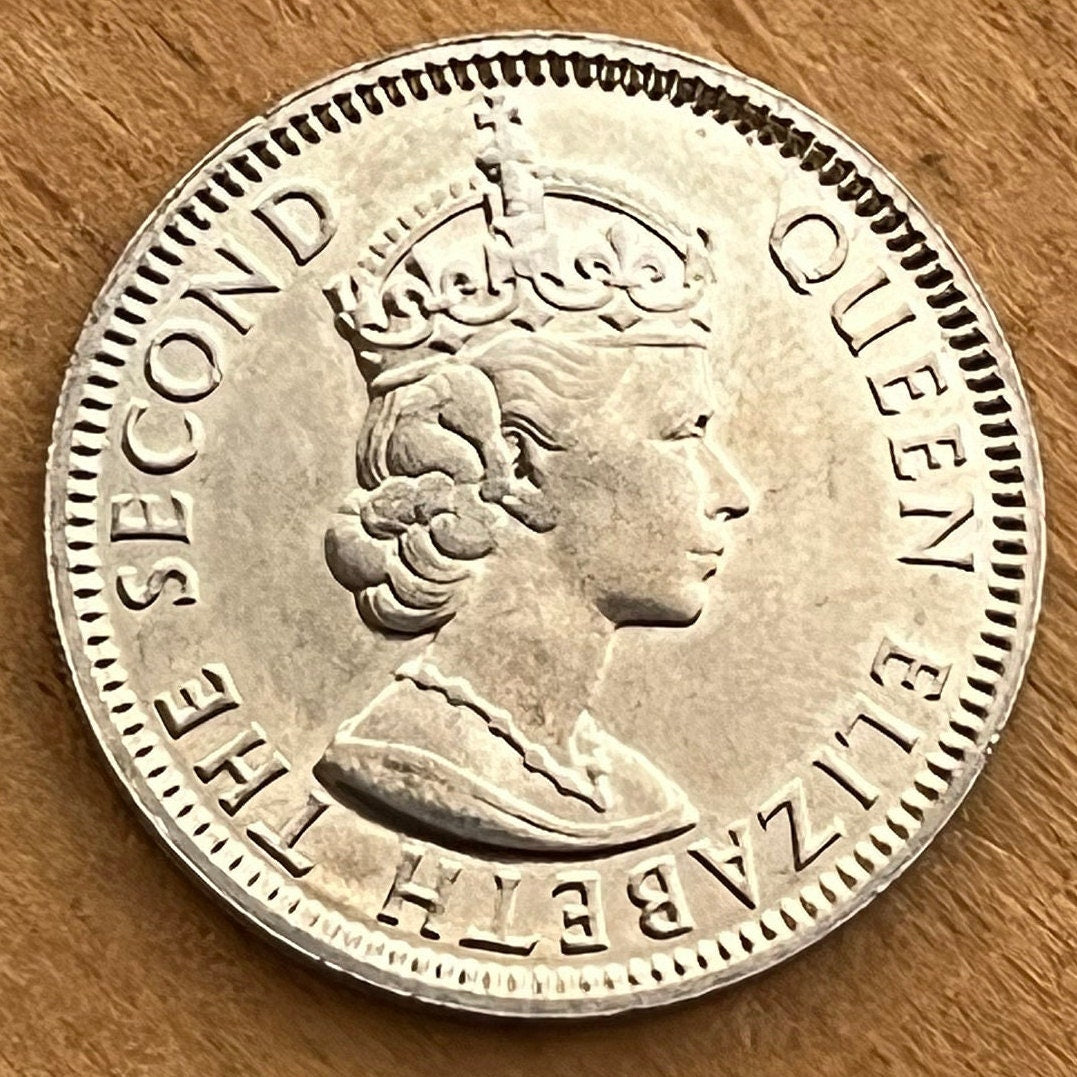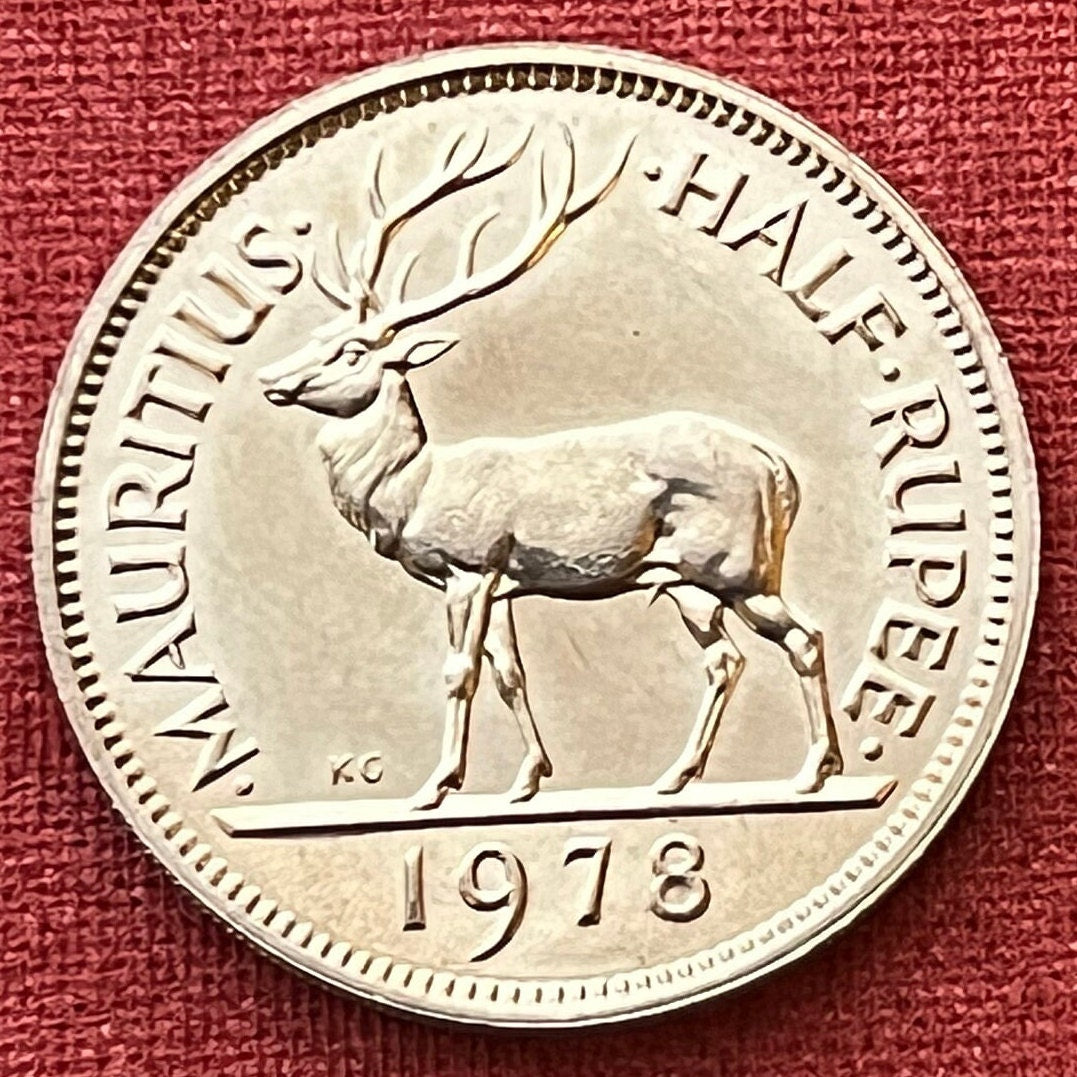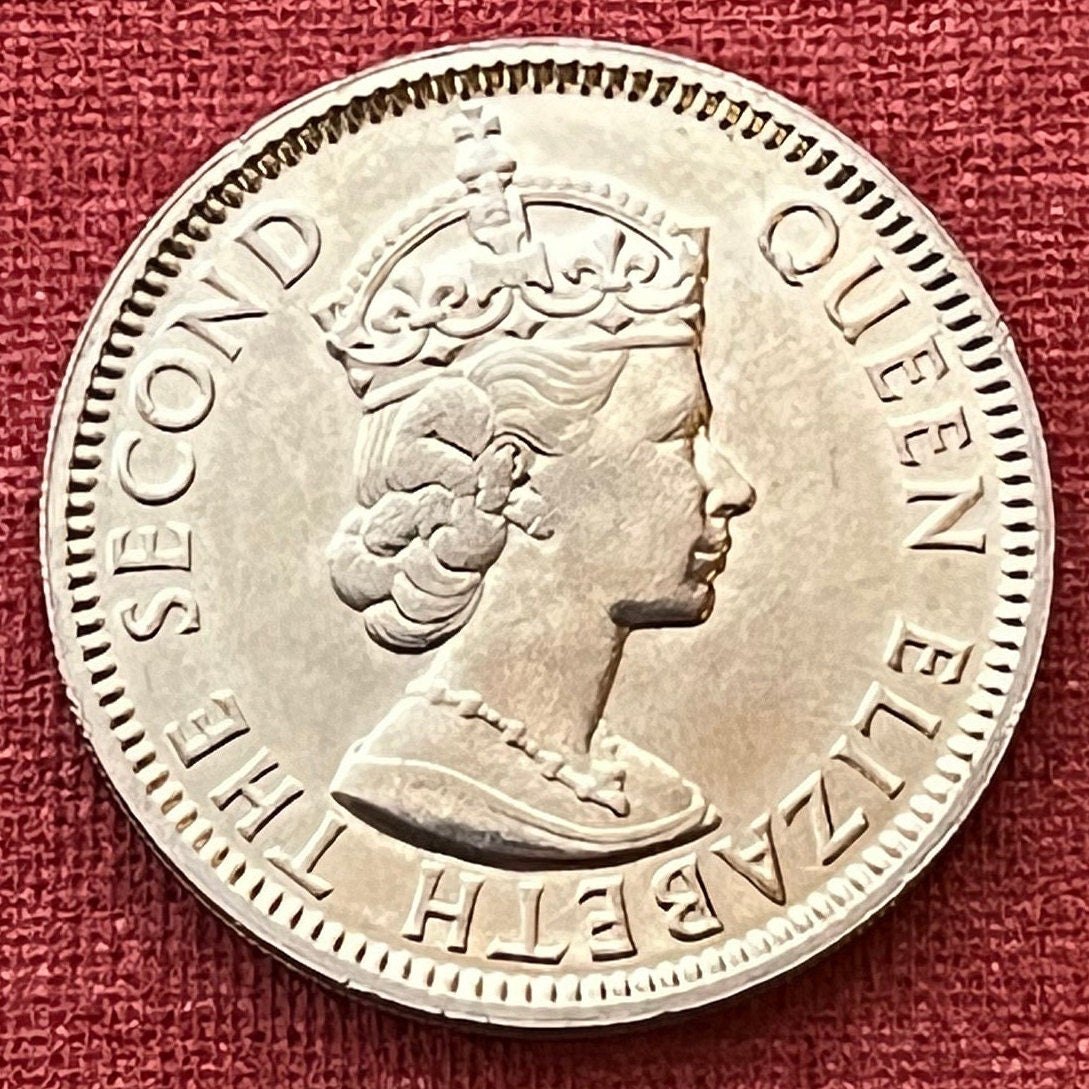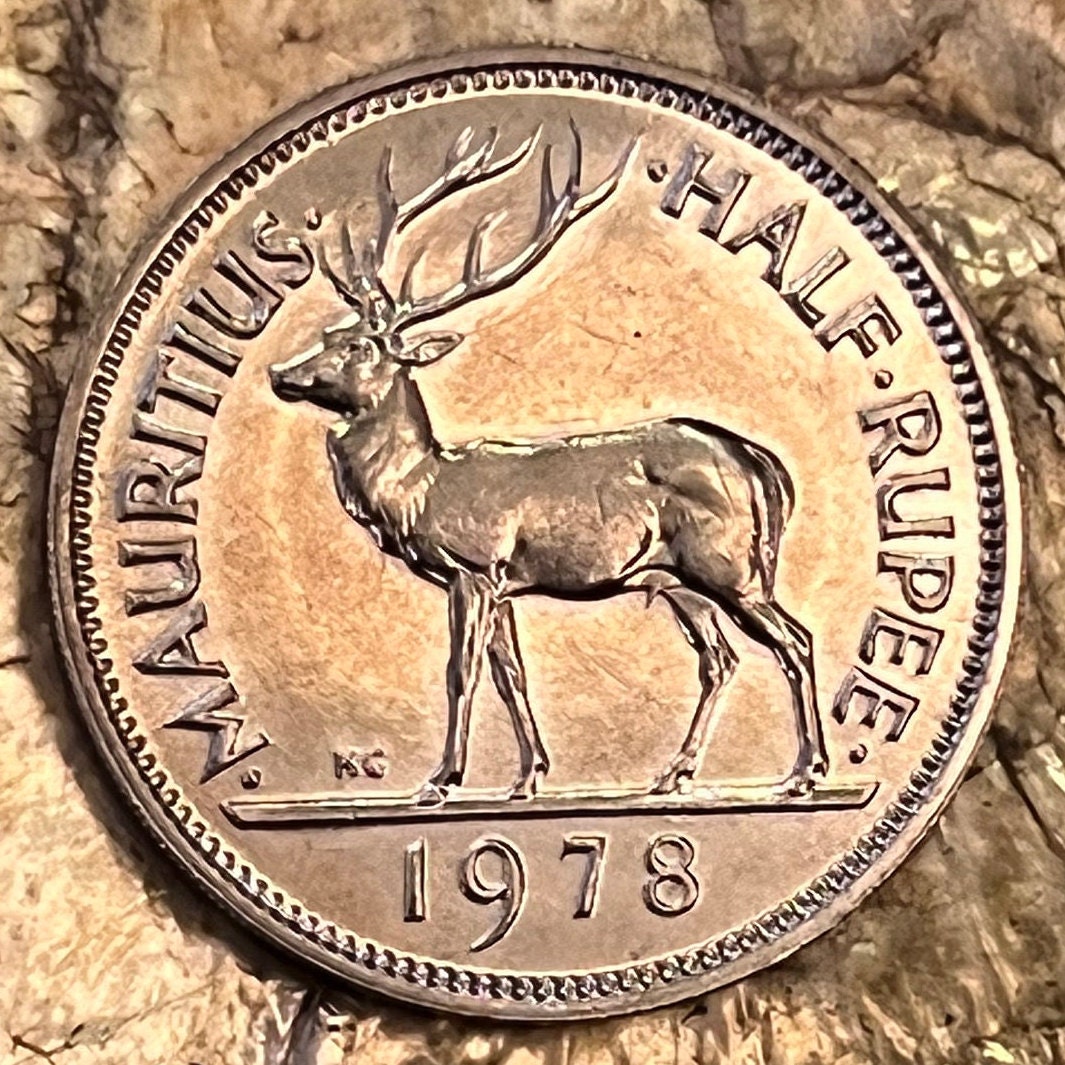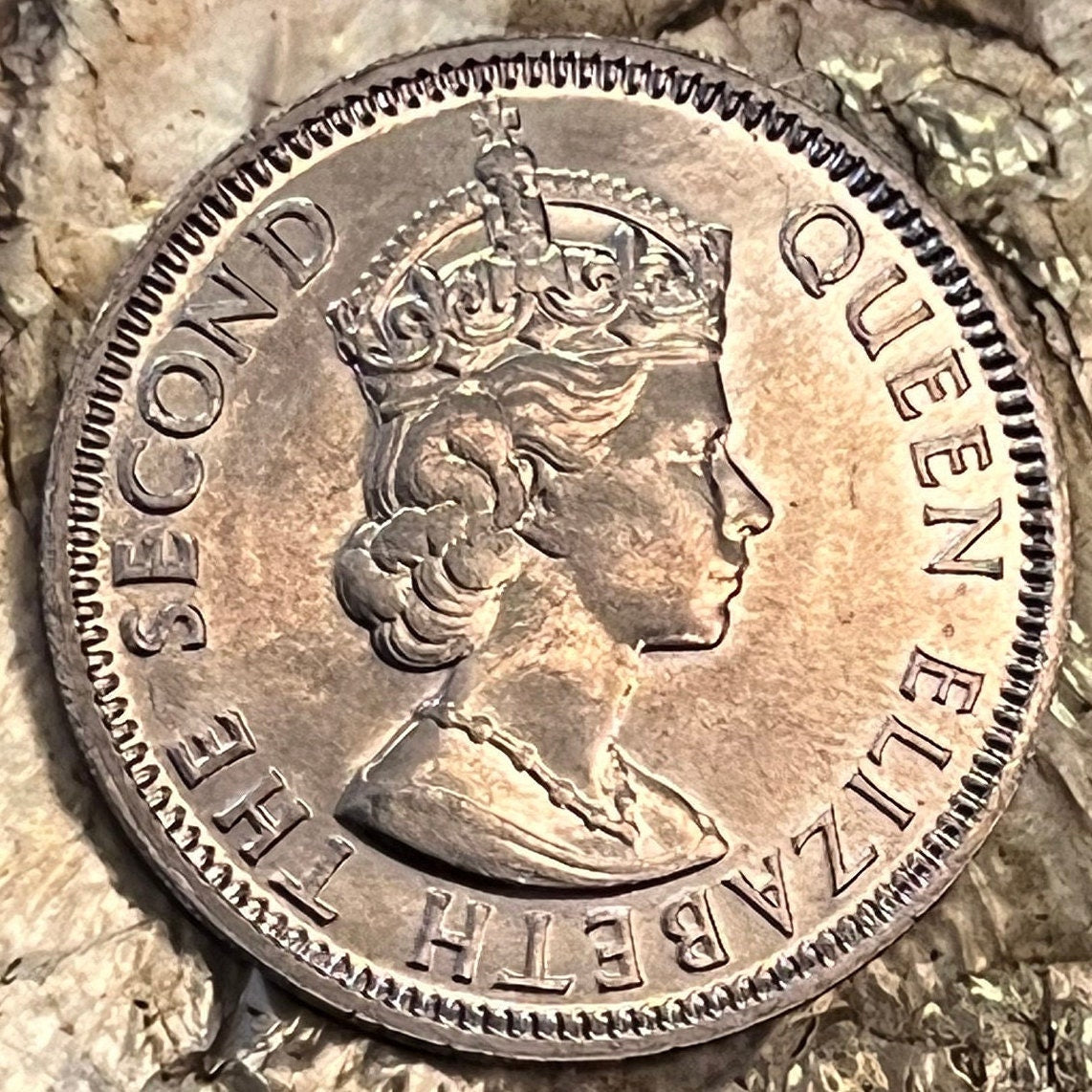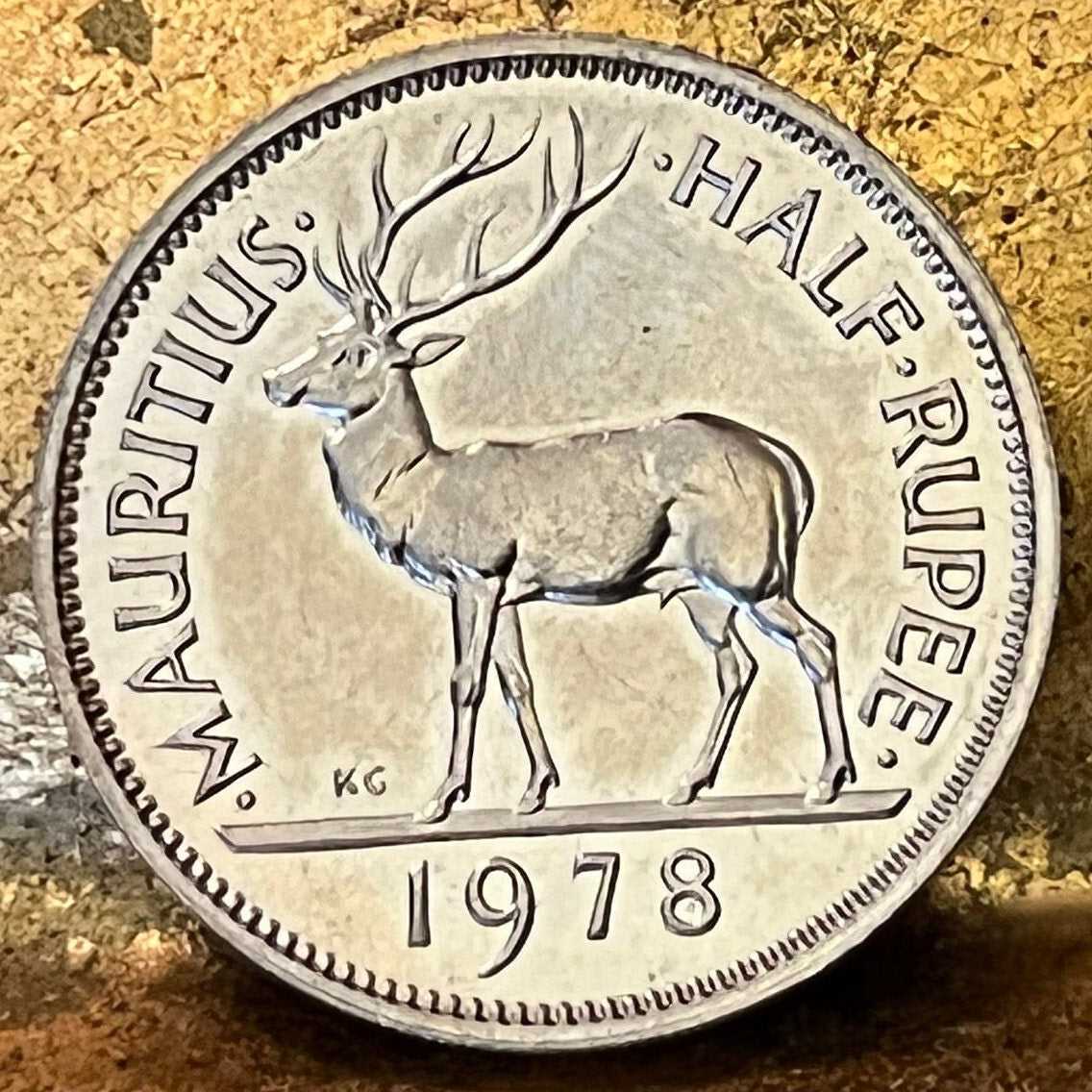elemintalshop
Swamp Deer Half Rupee Mauritius Authentic Coin Money for Jewelry and Craft Making (Barasingha Stag) (Tudor Crown) 1965
Swamp Deer Half Rupee Mauritius Authentic Coin Money for Jewelry and Craft Making (Barasingha Stag) (Tudor Crown) 1965
Couldn't load pickup availability
Swamp Deer Half Rupee Mauritius Authentic Coin Money for Jewelry and Craft Making (Barasingha Stag) (Tudor Crown) 1965
Obverse: First crowned portrait of HM Queen Elizabeth II facing right, wearing the stylized heraldic Tudor Crown.
Lettering: QUEEN ELIZABETH THE SECOND
Reverse: Barasingha Stag (Swamp deer) (Binomial Name: Rucervus duvaucelii) facing left, date in exergue
Lettering: ·MAURITIUS· ·HALF·RUPEE·
Features
Issuer Mauritius
Queen Elizabeth II (1952-1968)
Elizabeth II (1968-1992)
Type Standard circulation coin
Years 1965-1978
Value 1/2 Rupee (0.50 MUR)
Currency Rupee (1877-date)
Composition Copper-nickel
Weight 5.85 g
Diameter 23.65 mm
Thickness 1.8 mm
Shape Round
Technique Milled
Orientation Medal alignment ↑↑
Demonetized Yes
Number N# 2272
References KM# 37, Schön# 36
Wikipedia:
The barasingha (Rucervus duvaucelii), also called swamp deer, is a deer species distributed in the Indian subcontinent. Populations in northern and central India are fragmented, and two isolated populations occur in southwestern Nepal. It has been extirpated in Pakistan and Bangladesh, and its presence is uncertain in Bhutan.
The swamp deer differs from all other Indian deer species in that the antlers carry more than three tines. Because of this distinctive character it is designated bārah-singgā, meaning "twelve-horned" in Hindustani. Mature stags usually have 10 to 14 tines, and some have been known to have up to 20.
In culture
Rudyard Kipling in The Second Jungle Book featured a barasingha in the chapter "The Miracle of Purun Bhagat" by the name of "barasingh". It befriends Purun Bhagat because the man rubs the stag's velvet off his horns. Purun Bhagat then gives the barasinga nights in the shrine at which he is staying, with his warm fire, along with a few fresh chestnuts every now and then. Later as pay, the stag warns Purun Bhagat and his town about how the mountain on which they live is crumbling.
******
The Tudor Crown, also known as the King's Crown or Imperial Crown, is a widely used symbol in heraldry of the United Kingdom. While various crown symbols had been used for this purpose for many years previously, the specific Tudor Crown design was standardised at the request of Edward VII. It was never intended to represent any actual physical crown, although in shape it bears a close resemblance to the small diamond crown of Queen Victoria. Upon the accession of Elizabeth II, she requested the design to be replaced with a representation of the St Edward's Crown (with depressed arches) which she wore at her coronation. Many, though not all, of the derived designs around the world were updated to match.
Source: https://coin-brothers.com/catalog/coin2981
*******
Wikipedia:
Mauritius, officially the Republic of Mauritius, is an island nation in the Indian Ocean about 2,000 kilometres (1,200 mi) off the southeast coast of the African continent, east of Madagascar. It includes the main island (also called Mauritius), as well as Rodrigues, Agaléga and St. Brandon. The islands of Mauritius and Rodrigues, along with nearby Réunion (a French overseas department), are part of the Mascarene Islands. The capital and largest city, Port Louis, is located in Mauritius, where most of the population is concentrated. The country spans 2,040 square kilometres (790 sq mi) and has an exclusive economic zone covering 2.3 million square kilometres.
Arab sailors were the first to discover the uninhabited island, around 975, and they called it Dina Arobi. The earliest confirmed discovery was in 1507 by Portuguese sailors, who otherwise took little interest in the islands. The Dutch took possession in 1598, establishing a succession of short-lived settlements over a period of about 120 years, before abandoning their efforts in 1710. France took control in 1715, renaming it Isle de France. In 1810, the United Kingdom seized the island, and four years later, in the Treaty of Paris (1814), France ceded Mauritius and its dependencies to the United Kingdom. The British colony of Mauritius included Rodrigues, Agaléga, St. Brandon, Tromelin, the Chagos Archipelago, and, until 1906, the Seychelles. Mauritius and France dispute sovereignty over Tromelin as the Treaty of Paris failed to mention it specifically. Mauritius remained a primarily plantation-based colony of the United Kingdom until independence in 1968.
In 1965, three years before Mauritius became independent, the UK split off the Chagos Archipelago from Mauritian territory, and also split off the islands of Aldabra, Farquhar, and Desroches from the Seychelles, to form the British Indian Ocean Territory (BIOT). The local population was forcibly expelled and the largest island, Diego Garcia, was leased to the United States. The UK has restricted access to the Chagos Archipelago, barring entry to casual tourists, the media, and former inhabitants. The sovereignty of the Chagos is disputed between Mauritius and the UK. In February 2019, the International Court of Justice issued an advisory opinion ordering the UK to return the Chagos Islands to Mauritius as rapidly as possible to complete the decolonisation of Mauritius.
Owing to its geographic location and centuries of colonialism, the people of Mauritius are highly diverse in ethnicity, culture, language and faith. It is the only country in Africa where Hinduism is the most practised religion. The island's government is closely modelled on the Westminster parliamentary system and Mauritius is highly ranked for economic and political freedom along with being the only African country with full democracy. Mauritius is also the continent's only country with "very high" Human Development Index. According to the World Bank, the country is classified as a high-income economy. Mauritius is also ranked as the most competitive, and one of the most developed economies in the African region. The country is a welfare state. The government provides free universal healthcare, free education up through the tertiary level and free public transportation for students, senior citizens, and the disabled. In 2019, Mauritius was ranked the most peaceful African country by the Global Peace Index.
Along with the other Mascarene Islands, Mauritius is known for its varied flora and fauna. Many species are endemic to the island. The island was the only known home of the dodo, which, along with several other avian species, was made extinct by human activities relatively soon after the island's settlement.
Share
